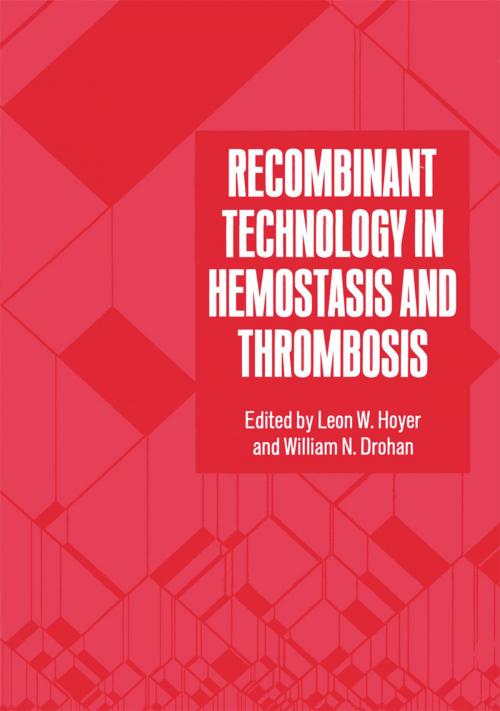Recombinant Technology in Hemostasis and Thrombosis
Nonfiction, Health & Well Being, Medical, Specialties, Internal Medicine, Hematology, Science & Nature, Science, Biological Sciences, Biochemistry| Author: | ISBN: | 9781461536987 | |
| Publisher: | Springer US | Publication: | December 6, 2012 |
| Imprint: | Springer | Language: | English |
| Author: | |
| ISBN: | 9781461536987 |
| Publisher: | Springer US |
| Publication: | December 6, 2012 |
| Imprint: | Springer |
| Language: | English |
Recent progress in molecular biology has led to a rapid expansion of our understanding of the proteins that are essential for hemostasis and thrombosis. The goal of the XXI Annual Scientific Symposium of the American Red Cross was to provide a forum to explore and document the impact of recombinant DNA technology in this field. The speakers described the essential features of the genes responsible for key plasma proteins important in hemostasis, including procoagulant Factors VIII and IX and anticoagulant proteins, Antithrombin III and Protein C. They emphasized the advances in recombinant DNA technology that have led to the cloning of these genes. Careful examination of the gene sequence has then provided a clearer understanding of the structure of the encoded proteins, and has given additional insight into their functional domains and their interactions in hemostasis. At the same time, these advances have made it possible to better characterize hemostatic disorders. A large number of published studies have shown that the mutations affecting biological activity are clustered in areas that define functional domains. They have led to fundamental advances in our understanding of specific diseases and they have made it possible to develop more accurate and sensitive diagnostic tests for the detection of the disease states.
Recent progress in molecular biology has led to a rapid expansion of our understanding of the proteins that are essential for hemostasis and thrombosis. The goal of the XXI Annual Scientific Symposium of the American Red Cross was to provide a forum to explore and document the impact of recombinant DNA technology in this field. The speakers described the essential features of the genes responsible for key plasma proteins important in hemostasis, including procoagulant Factors VIII and IX and anticoagulant proteins, Antithrombin III and Protein C. They emphasized the advances in recombinant DNA technology that have led to the cloning of these genes. Careful examination of the gene sequence has then provided a clearer understanding of the structure of the encoded proteins, and has given additional insight into their functional domains and their interactions in hemostasis. At the same time, these advances have made it possible to better characterize hemostatic disorders. A large number of published studies have shown that the mutations affecting biological activity are clustered in areas that define functional domains. They have led to fundamental advances in our understanding of specific diseases and they have made it possible to develop more accurate and sensitive diagnostic tests for the detection of the disease states.















